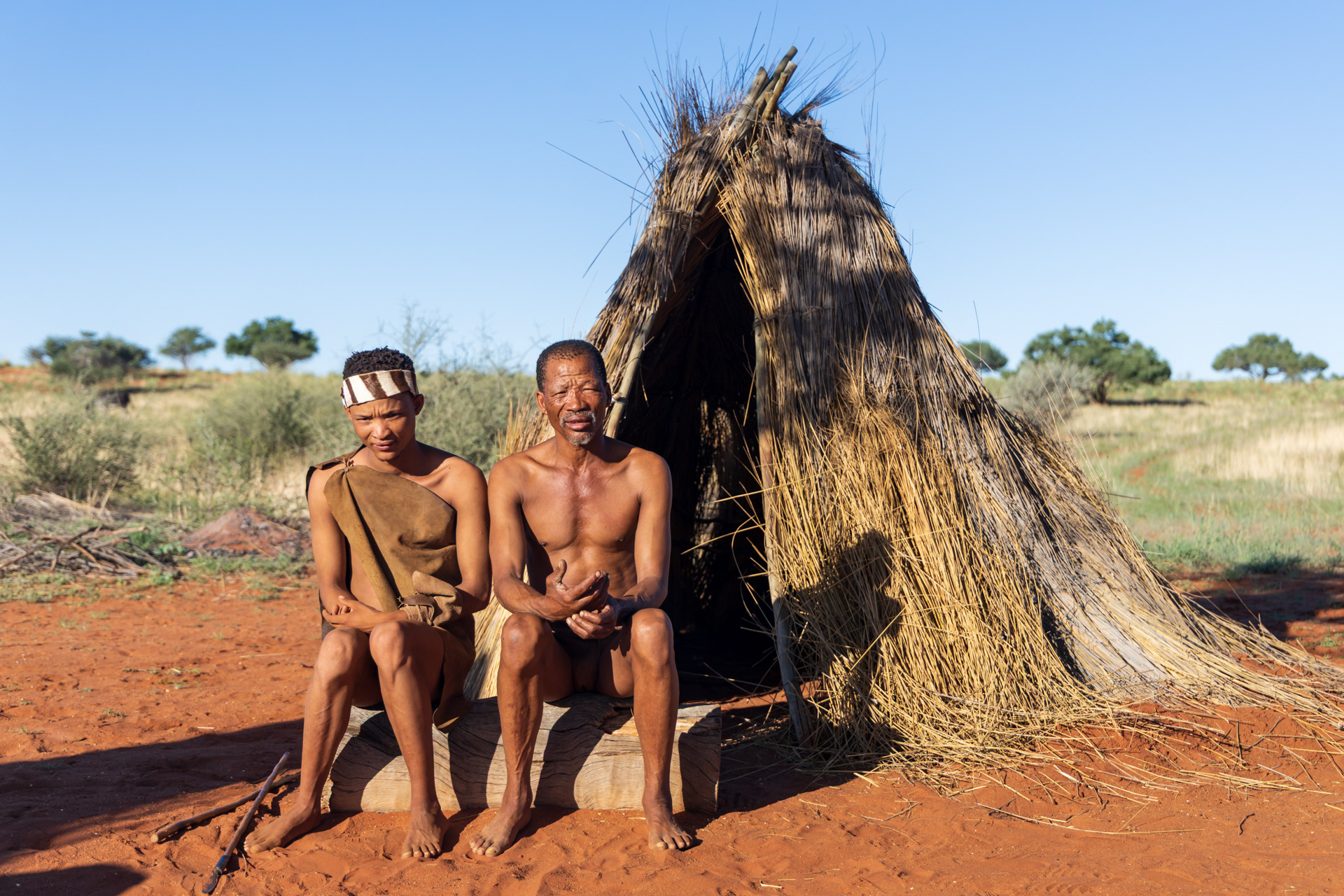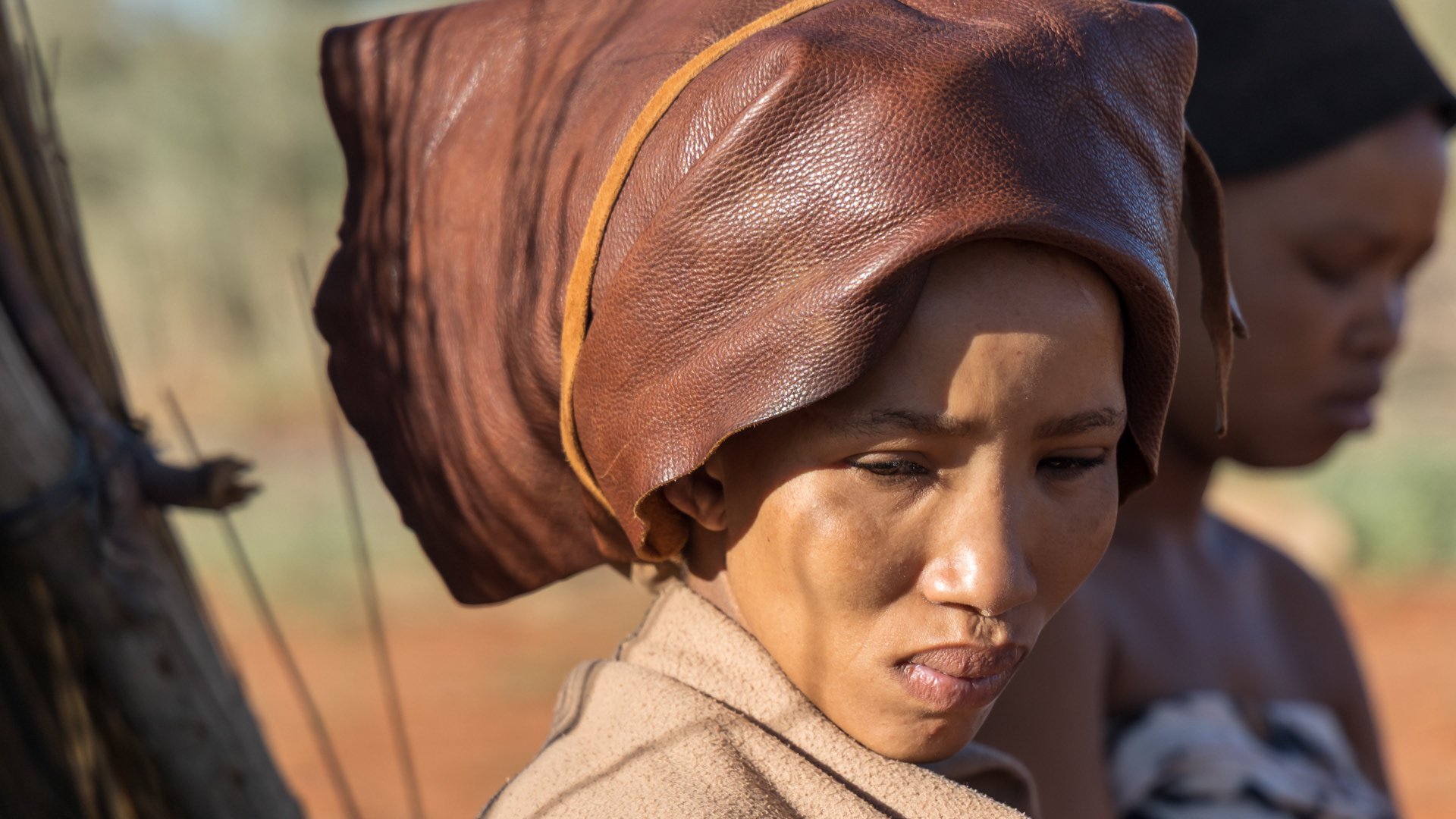Ancient Voices of the Kalahari – Between Tradition and Change
The Khoisan are among the oldest known peoples of southern Africa, whose ancestors have lived in the Kalahari region for tens of thousands of years. The term Khoisan refers to two closely related groups: the San (often called Bushmen), traditionally hunter-gatherers, and the Khoi, who historically practiced pastoralism.
In Namibia, small San communities such as the Ju/’Hoansi still live in and around the northeastern Kalahari. Their deep knowledge of nature, wildlife, and survival in an arid environment has long attracted scientific and public interest. Yet, today most San people face profound social and economic challenges — limited access to land, education, and employment — while also striving to maintain aspects of their cultural identity.
Modern initiatives, such as Living Museums and community projects, seek to preserve traditional skills and languages while offering visitors a respectful insight into this ancient heritage. These efforts, however, also raise questions about representation, authenticity, and the balance between cultural preservation and adaptation in a rapidly changing world.






